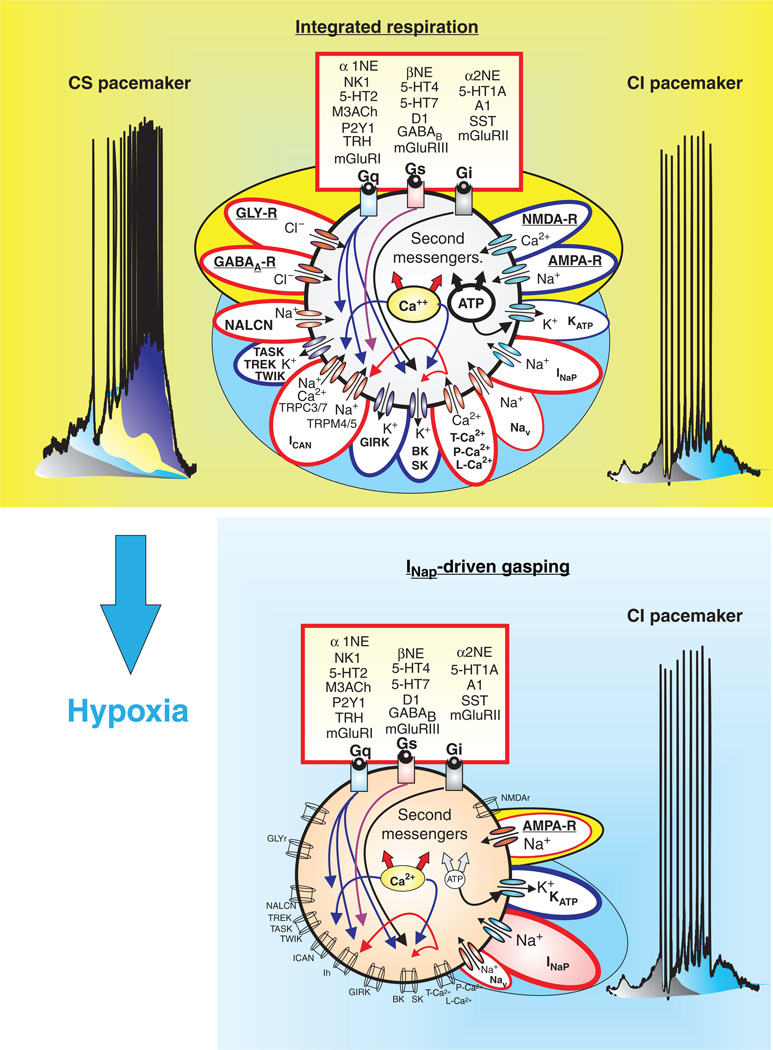Figure 12.
The diverse interaction and relative contribution of multiple mechanisms (see Figure 3) in a single neuron gives rise to a neuronal population that possesses heterogeneous properties used to generate bursting and ultimately contribute to the eupneic rhythm. This integrated respiration during eupnea provides both stability and dynamic responsiveness. Hypoxia reconfigures the network to a state dominated by the INaP, KATP, and the AMPA receptor (AMPA-R) and various forms of neuromodulation. At the cellular level, INaP appears to be the basis for bursting involved with the gasping rhythm (i.e., INaP-driven gasping).

